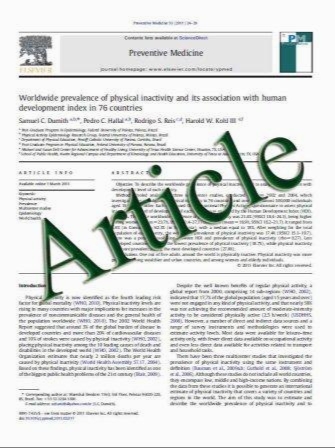Do Clinical Characteristics Predict the Presence of Small Bowel Angioectasias on Capsule Endoscopy?
- نوع فایل : کتاب
- زبان : انگلیسی
- مؤلف : Anthony T. DeBenedet Sameer D. Saini Mimi Takami Laurel R. Fisher
- چاپ و سال / کشور: 2010
Description
Background and Aims Angioectasias (AVMs) are the most common vascular anomaly of the gastrointestinal (GI) tract, and these lesions are often associated with obscure gastrointestinal bleeding (OGIB). It is unknown if the presence of upper and/or lower gastrointestinal AVMs are predictive of small bowel AVMs. The aims of this study are to define the small bowel segmental distribution of AVMs and to identify the factors predicting the presence of small bowel AVMs among a cohort of patients with a known history of AVMs in the upper and/or lower GI tracts who are undergoing capsule endoscopy (CE) for OGIB. Methods We performed a retrospective cohort analysis of 1,125 patients undergoing CE at our institution between 11/1/2001 and 8/31/2007. Inclusion criteria were: (1) complete esophagoduodenoscopy (EGD), CE, and colonoscopy, (2) OGIB indication for CE, and (3) history of C1 AVM on EGD and/or colonoscopy that was previously treated in the past or deemed not to be a clinically significant source of bleeding. Exclusion criteria were: (1) history of radiation therapy to the GI tract, and (2) presence of a congenital or systemic disease associated with GI AVMs. Data were extracted on: (1) age; (2) gender; (3) presence of diabetes, (4) presence of hypertension, (5) presence of aortic stenosis, (6) history of non-steroidal anti-inflammatory therapy, (7) history of anticoagulant therapy, (8) hemoglobin, platelet, and INR values prior to CE; (9) baseline serum creatinine; and (10) presence and GI tract segmental location of AVMs. Multivariate logistic regression was used to identify independent predictors of small bowel AVMs. Results 1,125 patients underwent EGD, CE, and colonoscopy. One hundred and fourteen patients had a history of C1 AVM on EGD and/or colonoscopy and met inclusion and exclusion criteria. The mean age was 69 years, and 63% of patients were women. 37% of patients were found to haveC1 jejunal AVM and 15% were found to have C1 ileal AVM. In multivariate analysis, age C 65 (OR 2.62, P = 0.05) and the presence of AVMs on EGD (OR 4.61, P = 0.02) were predictive of jejunal AVMs. AVMs on colonoscopy alone were not predictive of jejunal or ileal AVMs. No factors were found to predict the presence of ileal AVMs. Conclusions Patients with AVMs on EGD have an increased risk of jejunal AVMs on CE, particularly if they are elderly. Future studies should validate these findings in a prospective cohort.
Dig Dis Sci (2011) 56:1776–1781 DOI 10.1007/s10620-010-1506-9 Received: 9 June 2010 / Accepted: 17 November 2010 / Published online: 10 December 2010


